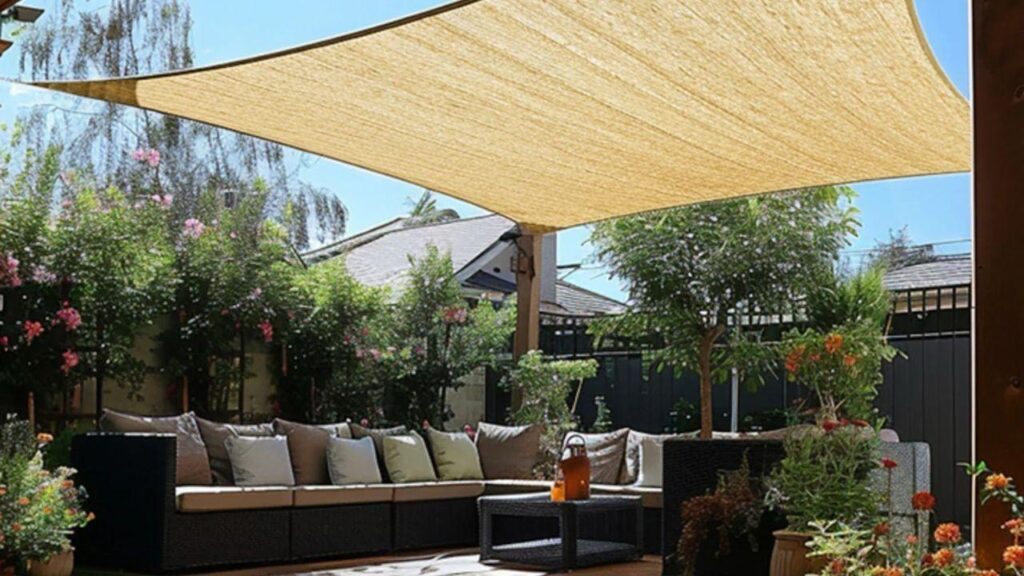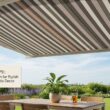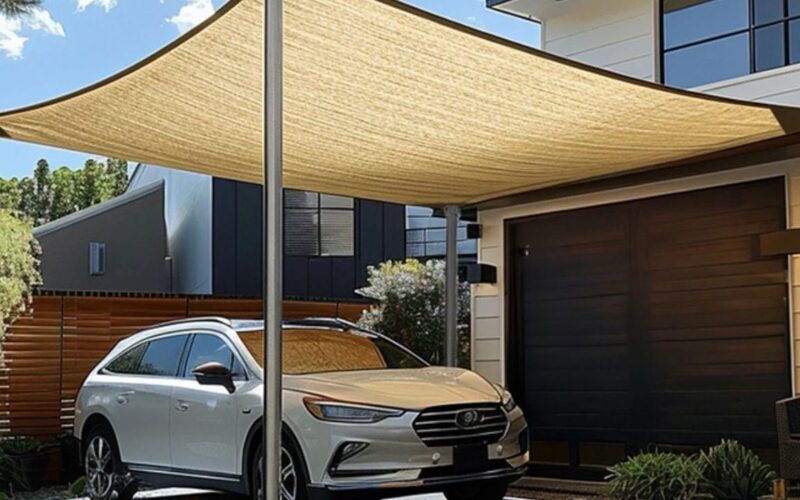To the people who are interested in improving their outdoor space in terms of form and functionality, the sail shade form one of the most appropriate and beautiful solutions. Be it a backyard patio, garden sitting area, poolside lounge, or any commercial outdoor cafe, a shade sail is a sharp-edged substitute for a normal awning/pergola. As a first-time buyer, it would be tempting to have an overload of options presented before you. The fabric types, shapes, installation advice, and maintenance in this article should make the buying process less complicated and help buyers make their choices informed and confident.
What Are Sun Shade Sails?
Tensioned canopies, also known as sun shade sails, are canopies of stretched fabric that are anchored between points to provide shaded zones. The idea behind these innovative structures is to draw inspiration from the technology applied in sailing and use flexible fabric and robust mounting systems to come up with a sculptural and functional shade solution. They are quite stylish, available in numerous materials, shapes, and sizes, so it is both a sun protection device and an aesthetic addition.
These sails are usually constructed of high-density polyethylene (HDPE) to provide breathable coverage or polyester with a coated finish, used as a waterproof sail. They are made to be able to survive outdoors and deflect harmful UV rays, but still, air flows below. This renders them suitable for developing comfort outside sitting areas, particularly in the summer seasons.
Knowledge of the Alternative Fabric Materials
A first-time buyer will have one of the most critical decisions to make, and that is to select the right fabric. Breathable and waterproof materials are the two most popular ones. Fabrics such as HDPE are breathable and enable the air to move through them, helping in the reduction of heat under the sail and avoiding the accumulation of heat. They are ideal in places where a high degree of ventilation is needed, with water not being a serious consideration.
Water-resistant fabrics, which are mostly polyester coated, are more appropriate where water resistance is a major priority. These are moisture blockers and full shades, and must be done angled to facilitate water flow and to avoid sagging. Learning the behavior of each fabric under varied climates is important in selecting a suitable one in a given space.
Selecting the Proper Shape and Size
Shade sails are made in different shapes, with a triangle and a rectangle being the most popular ones. Both shapes have their own purpose and will have a varying appearance. The triangle sails are modern and can be chic and bandied together to form shady artistic designs. They possess three anchor points and have the ability to create a twisted or sculptural shape once installed.
Rectangular sails are less modern and provide a wider coverage and thus are suitable in bigger spaces such as patios, dining spaces, or pool decks. They have four anchor points and offer uniform shade and are usually more readily aligned with other structures as well. The shape is to be determined by the size of the area to be covered, and also the effect the buyer wants to get in terms of visuals.
Design of Installation
Installation is very important in terms of performance as well as safety. The first-time buyer must check his/her backyard to find where they can attach their anchor points; these may be walls, tree felling, wooden poles, and also steel poles. The anchors should be strong enough to withhold the tension of the fabric and bear wind loads.
They should set the sail at an angle so that the water coming as rain flows down and does not stagnate in the middle. The majority of professionals suggest that the waterproof sails should have a slope of minimum 20 degrees. Also, the mounting points should not be on the same level- increasing the height difference makes the structure stronger, and it looks better.
Climate and Weather Conditions
The weather is a significant factor that helps in deciding the type of sun shade sail that is ideal. The breathable HDPE sails are usually the best to suit the hot and dry climates because they can allow air to pass and cool the surroundings. In wet or damp areas, the sails can be waterproofed, although these sails will need more frequent care to prevent mildew.
The other factor is wind. The sails having fewer attachment points, like a triangular sail, tend to give a good performance when it is windy since it is shaped in an aerodynamic manner. All sails, no matter their form, have to be taut so that they do not flap in the wind and cause damage to the sails. The sails can also be taken down in those areas where there are storms or rough weather conditions.
Custom Versus Pre-Made Choices
Purchasers will also have to make a choice between getting a tailored shade sail and getting a ready-made one. Custom sails provide exact measurements, customized profiles, and a greater variety of fabrics and colors. The choice is best suited to spaces that are in unusual shapes or to those that demand a custom fit.
Preexisting sails are usually cheaper and easily accessible in standard sizes. They are very suitable for normal patio sizes and simple installations. Nevertheless, a careful measure of space must still be taken by the buyer to guarantee that the sail will fit well with the needed tension margins.
Life and Durability
A sun shade sail does not require a lot of maintenance. The majority of the fabrics can be washed using mild soap and water, and periodic washing will ensure that the fabric remains fresh. Check the sail and hardware on a regular basis, which should be done after a storm or high wind.
A quality sun shade sail can be in existence many years when taken care of and installed properly. Most of the sails are UV stabilized, and stitching along the seam resists tearing. The durability of a product is obtained when investing in a well-produced product of a respectable and honest supplier means fewer replacements.
Conclusion
However, the sun shade sail seems overwhelming to first-time buyers. However, knowing the fundamental elements: type of fabric, shape, size, installation needs, and climate, it is much easier to choose the product that will fulfill the needs and the style. The sun shade sail that is adequately selected improves the aesthetics of the outdoor area and provides a safer and comfortable area to relax, entertain, or hold a family meeting.
Website thehues.com has all the types of sun shade sails that enable anyone, even amateurs, to complete the process due to professional advice, tailor-made solutions, and long-lasting materials. A suitable sail has the power to turn an ordinary yard into an attractive shady haven, and therefore every day of summer becomes a delight.




